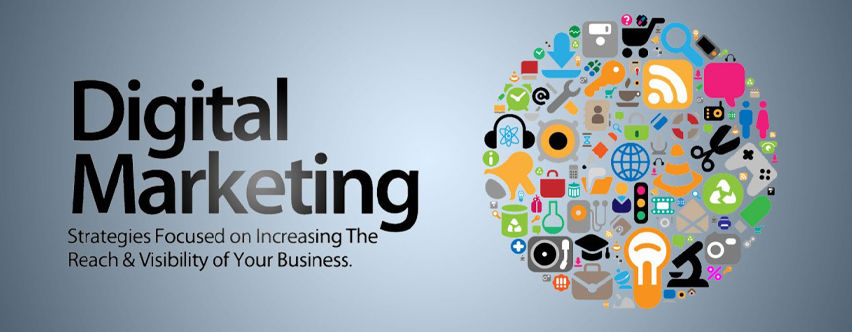Click here to get Digital Marketing Services
In today’s fast-paced and technology-driven world, businesses must adapt to the digital landscape to remain competitive. A well-planned digital marketing strategy is essential for reaching and engaging your target audience. In this blog, we’ll explore what a digital marketing strategy is, how to create one, and provide valuable insights, statistics, and frequently asked questions.
Table of Contents
Understanding Digital Marketing Strategy
What is a Digital Marketing Strategy?
A digital marketing strategy is a comprehensive plan that outlines how a business will use digital channels and platforms to achieve its marketing objectives. It involves a series of well-thought-out tactics to promote products or services, build brand awareness, and connect with the intended audience online.
Key Components of a Digital Marketing Strategy
A successful digital marketing strategy consists of several crucial components, each contributing to a well-rounded approach. Let’s dive into these components:
1. Website Optimization
Your website is the hub of your digital presence. Ensure it’s user-friendly, loads quickly, and is mobile-responsive. Content should be engaging, informative, and relevant.
2. Content Marketing
Content marketing is at the core of a digital marketing strategy. High-quality blog posts, videos, infographics, and more help attract and retain your target audience.
3. SEO (Search Engine Optimization)
Optimizing your online content for search engines is vital. Proper keyword research and implementation can help improve your website’s visibility on search engine results pages (SERPs).
4. Social Media Marketing
Social media platforms are excellent for building brand awareness and engaging with your audience. Create a presence on platforms relevant to your business and industry.
5. Email Marketing
Email remains an effective tool for nurturing leads and converting them into customers. Craft compelling email campaigns to keep your audience engaged.
6. Pay-Per-Click Advertising (PPC)
PPC advertising involves paid campaigns on platforms like Google Ads. It can deliver immediate results when used strategically.
7. Analytics and Data Analysis
Regularly monitor and analyze the performance of your digital marketing efforts. Tools like Google Analytics provide invaluable insights.
Digital Marketing Strategy Comparison Table
Here’s a comparison table to help you understand the different components of a digital marketing strategy:
| Component | Purpose | Key Benefits |
|---|---|---|
| Website Optimization | Enhance user experience and performance. | Improved website visibility and user engagement. |
| Content Marketing | Provide valuable, shareable content. | Attracts and retains the target audience. |
| SEO | Increase search engine visibility. | Higher organic traffic and brand exposure. |
| Social Media Marketing | Build brand awareness and engage users. | Direct interaction with the audience and content promotion. |
| Email Marketing | Nurture leads and maintain customer relationships. | Effective lead conversion and customer retention. |
| PPC Advertising | Drive immediate traffic to your website. | Precise targeting and quick results. |
| Analytics and Data Analysis | Measure campaign performance. | Data-driven decision-making and optimization. |
Statistics on Digital Marketing Strategy
Understanding the impact and potential of a digital marketing strategy is crucial. Let’s look at some recent statistics:
- Content Marketing: Content marketing generates three times as many leads as traditional marketing and costs 62% less. (DemandMetric)
- Social Media Engagement: 73% of marketers believe that their efforts through social media marketing have been “somewhat effective” or “very effective” for their business. (Buffer)
- Email Marketing: Email marketing has an average ROI of $42 for every $1 spent. (DMA)
- SEO: 75% of users never scroll past the first page of search results. (HubSpot)
- Mobile Optimization: 53% of mobile users abandon sites that take longer than three seconds to load. (Google)
- Video Marketing: Video marketers get 66% more qualified leads per year. (Aberdeen Group)
These statistics underscore the importance of a well-planned digital marketing strategy in today’s business landscape.
Frequently Asked Questions (FAQ)
1. Do I need a digital marketing strategy for my small business?
Yes, having a digital marketing strategy is equally important for small businesses. It helps level the playing field and reach potential customers in a cost-effective manner.
2. How often should I update my digital marketing strategy?
It’s recommended to review and update your digital marketing strategy annually or whenever significant changes occur in your business or industry.
3. Which digital marketing component is the most important?
Each component plays a critical role, and their importance depends on your business goals and target audience. For instance, if you want to improve website visibility, SEO is crucial, while content marketing is essential for audience engagement.
4. How can I measure the success of my digital marketing strategy?
Use key performance indicators (KPIs) relevant to your goals. Common KPIs include website traffic, conversion rates, email open rates, and social media engagement.
5. Can I handle digital marketing in-house or should I hire an agency?
The choice depends on your resources and expertise. Small businesses may start in-house, but as your strategy grows, you may consider outsourcing to a specialized agency.
In conclusion, a well-structured digital marketing strategy is the cornerstone of success in the digital age. By understanding its components, keeping an eye on relevant statistics, and addressing common questions, you can create a strategy that sets your business on the path to online growth and success. Stay updated and adaptable, and your digital marketing strategy will continue to be a valuable asset for your business.


Leave a Reply